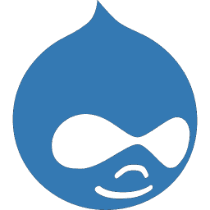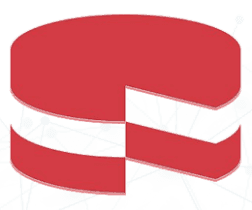Beschleunigen Sie Website: Bewährte Technologie
- JavaScript
Zusammenführen, Komprimieren, Lazy Loading - CSS
Größenkomprimierung und Lastoptimierung - Bilder
Komprimierung und Konvertierung mit CDN OptiPic - Widgets von Drittanbietern
Online-Berater, Chats, soziale Netzwerke usw. - Analysesysteme
Google Analytics, Facebook usw.
Welche Probleme und Empfehlungen von Google Pagespeed Insights werden verbessert
Minimize main-thread work
Consider reducing the time spent parsing, compiling and executing JS. You may find delivering smaller JS payloads helps with this.
Eliminate render-blocking resources
Resources are blocking the first paint of your page. Consider delivering critical JS/CSS inline and deferring all non-critical JS/styles.
Reduce unused JavaScript
Reduce unused JavaScript and defer loading scripts until they are required to decrease bytes consumed by network activity.
Reduce unused CSS
Reduce unused rules from stylesheets and defer CSS not used for above-the-fold content to decrease bytes consumed by network activity.
Ensure text remains visible during webfont load
Leverage the font-display CSS feature to ensure text is user-visible while webfonts are loading.
Reduce the impact of third-party code
Third-party code can significantly impact load performance. Limit the number of redundant third-party providers and try to load third-party code after your page has primarily finished loading.
Serve static assets with an efficient cache policy
A long cache lifetime can speed up repeat visits to your page.
Reduce JavaScript execution time
Consider reducing the time spent parsing, compiling, and executing JS. You may find delivering smaller JS payloads helps with this.
Efficiently encode images
Optimized images load faster and consume less cellular data.
Serve images in next-gen formats
Image formats like WebP and AVIF often provide better compression than PNG or JPEG, which means faster downloads and less data consumption.
Überprüfen Sie die Geschwindigkeit von Website - geben Sie Ihre Website an
So starten Sie mit Pagespeed OptiPic
Bestelltechnologie setzt OptiPic:Pagespeed ein
Warten Sie auf die Testimplementierung durch das OptiPic-Team
Zahlen Sie Geld auf Ihr Konto ein und wähle ein Paket
Preise: Bereitstellung + Abonnement
Einmalige Zahlung für die Bereitstellung. Monatliche Zahlung für ein Abonnement.
Включая ускорение бекенда, TTFB, время ответа сервере, время до первого байта
Beschleunigung der Front-End-Website (Client-Beschleunigung)
Abgesehen von der Bildkomprimierung kann die Front-End-Website-Beschleunigung durch die Optimierung anderer Komponenten erreicht werden:
- Backend-Caching von statischen Dateien (Bilder, CSS, JS).
- CSS-Zusammenführung.
- CSS-Komprimierung.
- JS-Zusammenführung.
- JS-Komprimierung.
- Verlagerung von CSS und JS in den unteren Teil des HTML-Codes der Webseite.
- Deaktivieren unnötiger Skripte und Widgets.
Beschleunigung der Back-End-Website (Server-Beschleunigung)
Die Back-End-Beschleunigung soll die Zeit für die Webseitenerstellung durch den Server minimieren. Es wird normalerweise durch die folgenden Methoden erreicht::
- Wechsel zum leistungsstärkeren Hosting oder Server.
- Optimierung der Webserver-Einstellungen (Apache, nginx, php-fpm).
- Optimierung der MySQL-Einstellungen (oder Einstellungen anderer Datenbankverwaltungssysteme, die von der Website verwendet werden).
- Caching von Datenbankanfragen.
- Caching von Anfragen an externe API.
- Totales Caching (die "Composite Website"-Technologie und ähnliches).
- Refactoring und Optimierung der PHP-Code-Logik.
OptiPic-Experten wissen alles über Beschleunigungsverfahren und können Ihnen bei der ganzheitlichen Steigerung Ihrer Website-Performance helfen. СKontaktieren Sie uns, wenn Sie Ihre Website extrem beschleunigen müssen.

 WordPress
WordPress  Joomla
Joomla  Bitrix
Bitrix  Yii
Yii  Laravel
Laravel  Symfony
Symfony  Zend Framework
Zend Framework  Drupal
Drupal  MODx
MODx  AMIRO.CMS
AMIRO.CMS  CakePHP
CakePHP  CodeIgniter
CodeIgniter  CS-Cart
CS-Cart  DataLife Engine
DataLife Engine  DIAFAN.CMS
DIAFAN.CMS  FuelPHP
FuelPHP  HostCMS
HostCMS  InstantCMS
InstantCMS  Magento
Magento  NetCat
NetCat  OpenCart
OpenCart  Phalcon
Phalcon  PHP
PHP  PHPixie
PHPixie  PrestaShop
PrestaShop  Shop-Script
Shop-Script  Simpla
Simpla  SiteEdit
SiteEdit  Slim
Slim  UMI.CMS
UMI.CMS